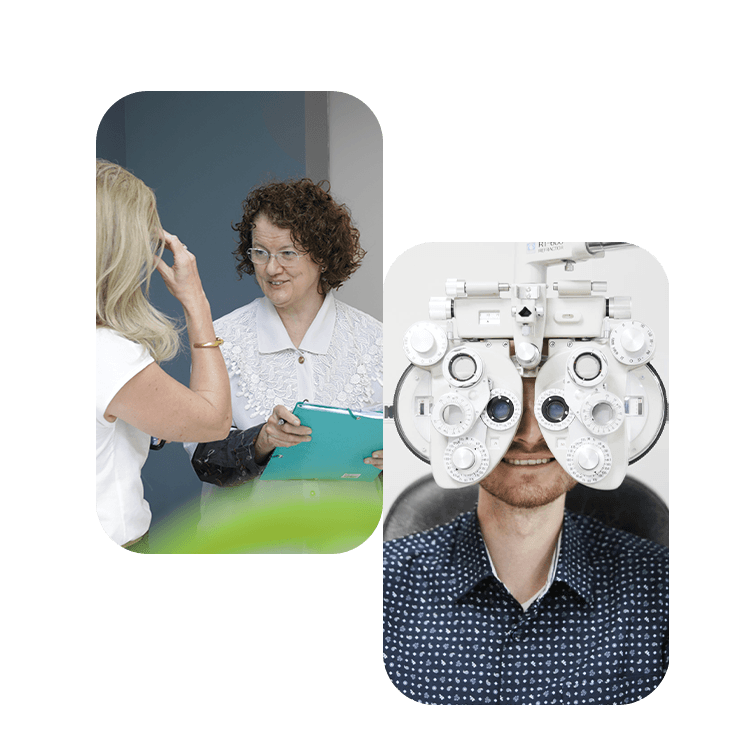Mon - Sat: 8:00 AM - 6:00 PM
Sunday: CLOSED
Eye Care Designed for You
We provide the highest level of eye care in the safest possible environment for your family.
Make an Appointment
Online Schedule

Pediatric Ptosis Treatment
Pediatric ptosis or eyelid drooping can lead to complications like lazy eye or amblyopia. Learn about pediatric ptosis treatment.
Pediatric ptosis is a condition characterised by the upper eyelid being lower than it should be. Ptosis can manifest in one or both eyelids and can be present at birth. Ptosis present at birth or that manifests within the first year of life is considered congenital ptosis.
A droopy eyelid can block your child’s vision, eventually leading to lazy eye and (potentially) other vision problems. Pediatric ptosis surgery may be indicated in severe cases, so consult a pediatric ptosis doctor immediately to assess your child’s condition and discuss your treatment options.
Make an Appointment
WhatsApp Us





Frequently Asked Questions About Pediatric Ptosis
What causes ptosis in children?
Pediatric ptosis is typically caused by eyelid muscle weakness. The levator palpebrae superioris is the thin triangular muscle that lifts and retracts the eyelid. In infants and children with ptosis, this muscle may be underdeveloped. Damage to the nerves that control this muscle may also cause eyelid drooping.
Other conditions apart from eyelid muscle weakness or nerve damage may cause pediatric ptosis. Trauma at birth (e.g., from contact with the forceps) is a potential cause of congenital ptosis. Eye movement disorders, eyelid tumours and problems with the brain and nervous system may also make the eyelid droop lower than it should.
How do you treat ptosis in children?
Pediatric ptosis treatment typically calls for corrective eyelid surgery. Pediatric ptosis surgery can take one of three types: the external approach (also known as levator advancement), the internal approach (shortening of the levator or Mueller’s muscle), or frontalis sling fixation.
In the external approach, the doctor makes an incision in the eyelid’s outside crease and repositions the attachment of the levator muscle. In the internal approach, the doctor turns the eyelid inside out before shortening the levator or Mueller’s muscle. In frontalis sling fixation, the doctor uses a small silicone rod (or something similar), which is passed underneath the eyelid’s skin, to attach the eyelid to the frontalis muscle and force eyelid lift. Like pediatric cataract surgery, frontalis sling fixation typically requires general anaesthesia.
What are the 5 causes of ptosis?
Acquired ptosis has five primary causes. They are aponeurotic, neurogenic, myogenic, mechanical and traumatic. Among these five, aponeurotic ptosis is the most common, and it is characterised by a levator muscle that has become overstretched due to ageing, long-term use of contact lenses, or excessive eye rubbing and pulling.
Neurogenic ptosis arises due to nerve conditions like myasthenia gravis, Horner syndrome and third nerve palsy; these may cause nerve pathway damage that interferes with the proper functioning of the eyelid muscles. Myogenic ptosis is caused by systemic health conditions that can lead to levator muscle weakness. Mechanical ptosis is eyelid drooping due to excessive eyelid skin or mass growth. Traumatic ptosis is due to an injury that weakens the eyelid muscles or damages the nerves that control these muscles.
Can kids get ptosis?
Yes, children can get ptosis. Ptosis, the medical condition characterised by a sagging or drooping upper eyelid, can affect infants and children. Children may have it in one or both eyelids, and it may be congenital (i.e., present at birth or within the first year) or acquired.
Pediatric ptosis treatment may entail surgery. If the drooping eyelids are not significantly affecting a child’s vision, pediatric ptosis surgery may be deferred until the child has grown older and bigger. The doctor may also prescribe other treatments as necessary, e.g., an eye patch to strengthen the weaker eye, pediatric ortho-k for myopia or phakic intraocular lens implantation to resolve other refractive errors.
Gulf Family Clinic is a leading Dubai eye clinic providing specialised eye care, vision correction and other pediatric treatment services for more than 20 years. If you suspect your child has ptosis, book a consultation for proper diagnosis and treatment.



